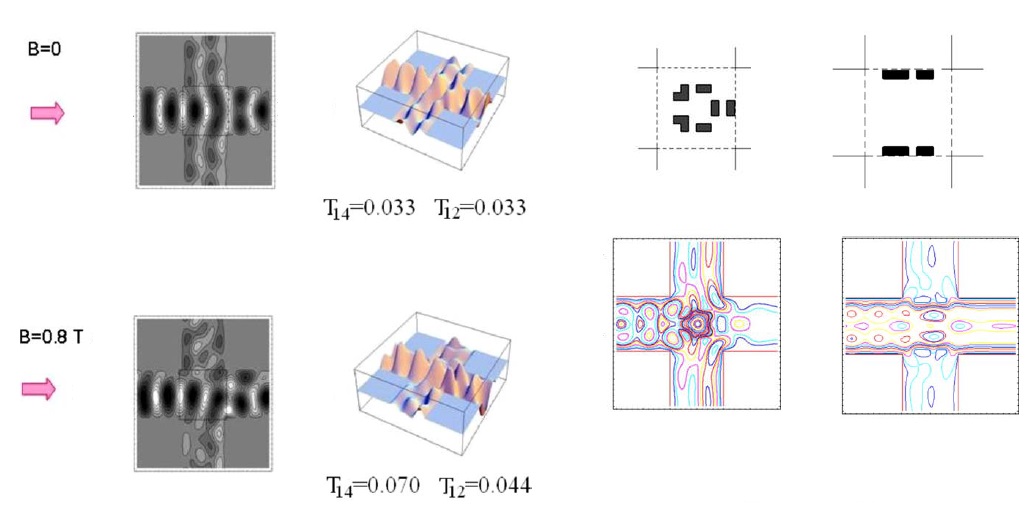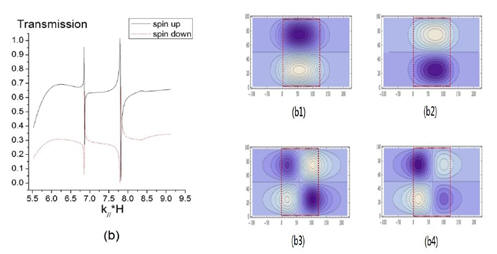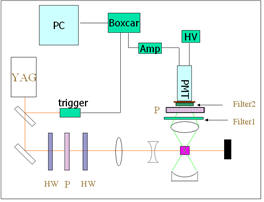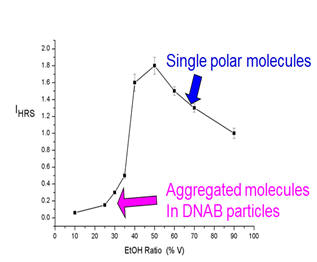
My Research Gallery
1. Topological and magnetic phase transitions in silicene nanoribbons

We find that in different ribbon widths and spin-orbital coupling strengths, there exist the metal-insulator transition, with the abrupt change of topological and magnetic changes. This research gives a clear understanding for the usage of Hubbard model and non-interaction tight-binding model for the Hubbard-Kane systems.
Reference: Xiaolong Lü, Yang Xie, Hang Xie. “Topological and magnetic phase transition in silicene-like zigzag nanoribbons”,New Journal of Physics,20,043054,(2018)
2. Excited spin waves in graphene nanoribbons

We find that there exist serials of spin waves in graphene nanoribbons (both in periodic or open systems) with the linear dispersion relation in the long-wave limit. This discovery extends the understandings of the spin waves in nano systems.
Reference: Hang Xie, JingHua Gao, and DeZhuan Han. "Excited spin density waves in zigzag graphene nanoribbons." New Journal of Physics 20, 013035, (2018).
3. Topological transport and resonance in silicene nano-junctions

We discover a novel type of Fabry-Perot resonances with the spatial and spin separations in silicene nanoribbon junction. It is based on the topological edge current in different topological phases. This study is very useful in the spin filters of future spintronic nano devices.
Reference: Xiao-Long Lü and Hang Xie, “Spin Filters and Switchers in Topological-Insulator Junctions”, Phys. Rev. Applied, 12, 064040 (2019).
4. Dynamic Quantum Transport in Graphene Nano-ribbons

The electronic current flows through the armchair and zigzag graphene nanoribbons with different transient behaviors.
The energy structure and the self-energy of the leads determines the steady and dynamic quantum transport properties.
We use the non-Equilibrium Green's function theory and the tight-binding method in the calculations.
Reference: Hang Xie, Yanho Kwok, Yu Zhang, Feng. Jiang, Xiao Zheng, YiJing Yan and GuanHua Chen, “Time-dependent quantum transport theory and its applications to graphene nanoribbons", Physica Status Solidi B,250: 2481,(2013)
4. Quantum Interference in the Complicated Nano-structures

The electron behaves like waves in the 2D surface of hetero-structure semiconductor devices. It also deviates by the magnetic field.
We use the mode-matching method to obtain the transmission and electron distribution for the 4-terminal systems. We also use an optimization method
(genetic algorithm) to get some optimal artificial structures with a large Hall effect.
Reference: Hang Xie and Ping Sheng,"Quantum interference Hall effect in nanopatterned two-dimensional electron gas systems", Physical Review B 79, 165307, (2009).
5. Spin-orbital coupling systems with Rashba bound states

We generalize the mode-matching method to the spin system with the spin-orbital (Rashba) interaction. We also obtain the eigenmodes for the
spin-bound states in the Rashba waveguides.These bound states perfectly explains the transmission spectra of the Rashba waveguides.
Reference: Hang Xie, Feng Jiang, Wei E.I. Sha, "Numerical methods for spin-dependent transport calculations and spin bound states analysis in Rashba waveguides", Computer Physics Communications, 198, 118, (2016).
6. Molecular aggregation and micelle solubilization detected by non-linear optical scattering method



Some oil-like organic molecules tend to aggregate in the water solution. When they are radiated by the ultra-fast laser beams, the scattered double-frequency light can be detected due to their non-linear optical property. This property also greatly changes when they are in different environments or orientations. Thus we use this non-linear scattering method (HRS) to detect the in-time aggregation status in different solutions.
Surfactant molecules form the spherical aggregates in water called the 'micelles'. They can absorb the oil-like molecules on their surfaces and destroy their original aggregations. So we find the HRS signal changes when the organic molecules are 'solubilized' by these micelles.
Reference: Hang Xie, Liying Liu, Wencheng Wang, Lei Xu, "Solubilization-induced surface structural changes of sol particles observed by hyper Rayleigh scattering", Chemical Physics Letters 403,175, (2005).